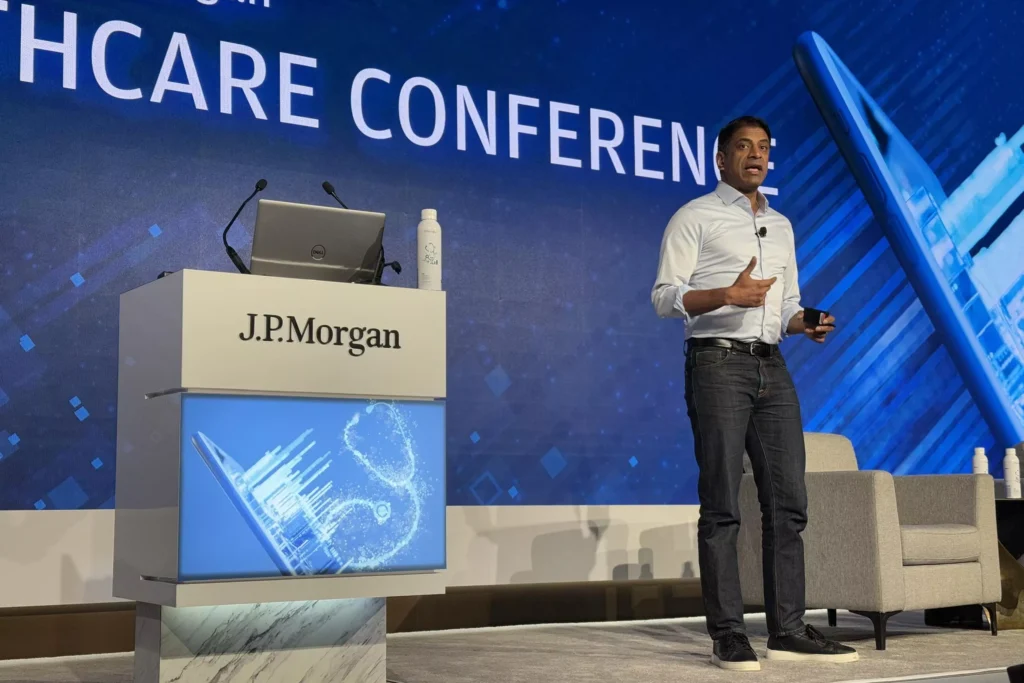The 43rd annual J.P. Morgan Healthcare Conference begins in San Francisco under tighter security and market uncertainty, but early signals suggest renewed optimism for biotech innovation and partnerships in 2025.
The 43rd annual J.P. Morgan Healthcare Conference begins in San Francisco under tighter security and market uncertainty, but early signals suggest renewed optimism for biotech innovation and partnerships in 2025.

The Westin St. Francis in San Francisco once again transformed into the beating heart of global healthcare finance and biotech strategy, as the J.P. Morgan Healthcare Conference officially began. For more than four decades, the event has served as the stage where CEOs, investors, and dealmakers set the tone for the year ahead. It is where emerging science meets capital, where partnerships are inked in hotel lobbies, and where whispers of blockbuster M&A ripple across markets. This year, however, the atmosphere was markedly different: a mix of caution, heightened security, and tentative hope.
The visible security presence was unlike previous years. Metal detectors, increased police patrols, and private security teams surrounded the venue. The heightened vigilance followed a difficult end to 2024, when the industry was shaken by the killing of a UnitedHealth Group executive, an event that underscored the vulnerability of public-facing healthcare leaders. That tragedy, alongside broader political and economic volatility, lent the conference a more somber undertone. Attendees accustomed to fast-paced networking found themselves navigating both strategic uncertainty and physical barriers designed to safeguard the proceedings.
Despite this subdued backdrop, the conference quickly produced a stream of headlines. Johnson & Johnson, Eli Lilly, and GSK set the tempo by announcing deals worth over a billion dollars each, signaling that big pharma may be regaining its appetite for transformative transactions after a relatively quiet 2024. These announcements reignited talk that 2025 could mark the rebound of biotech M&A, a lifeline for smaller firms that weathered a storm of capital constraints and clinical trial disappointments last year. Analysts pointed to Lilly’s continued dominance in obesity and metabolic disease, J&J’s diversification in oncology, and GSK’s sharpening focus on infectious disease and vaccines as emblematic of a sector leaning into its strengths while still scouting for external innovation.
The macroeconomic environment loomed large over the discussions. Persistent high interest rates, tighter borrowing conditions, and investor skepticism created an environment where only the strongest pipelines or most strategically aligned partnerships are likely to move forward. Executives also spent time behind closed doors discussing the political landscape. With Donald Trump’s return to the White House now confirmed, uncertainty around drug pricing reform and the Inflation Reduction Act hung in the air. Some feared harsher cost-containment measures, while others speculated a more business-friendly regulatory posture could paradoxically favor deal-making.
For clinical research leaders, JPM Week continues to be a bellwether. Beyond the financial headlines, the real story is often about which therapeutic areas dominate investor attention and conference stages. In 2025, oncology, gene editing, obesity therapeutics, and neuroscience drew the spotlight. Start-ups presenting at side events emphasized AI-enabled drug discovery, novel delivery technologies such as lipid nanoparticles, and next-generation cell therapies. Each represented not only a scientific frontier but also a test case for whether capital markets will support innovation at scale after a turbulent period for biotech IPOs.
Perhaps the most telling aspect of this year’s JPM was the shift in tone from unbridled optimism to disciplined pragmatism. Attendees recognized that the era of easy funding and “growth at any cost” is over. Instead, clinical programs with strong proof-of-concept data, clear regulatory strategies, and pathways to commercialization are commanding attention. For companies, that means 2025 is not the year to spin lofty promises, but rather the year to prove durability with data.
Looking ahead, the next three days of JPM are expected to deliver additional deal announcements and scientific spotlights. However, even in its early hours, the 2025 conference has crystallized a theme: the biopharma industry is recalibrating. Security, stability, and strategic clarity now matter as much as innovation. Yet amid the guarded atmosphere, the willingness of major pharma players to spend big again signals that the fundamentals of biotech—turning discovery into cures—remain intact.
For investors, the message is clear: selectivity will rule 2025, but opportunities abound. For clinical researchers, the message is equally important: solid trial data and thoughtful regulatory planning will be the currency of the year. And for patients, the very fact that biopharma’s most influential conference is once again buzzing with energy, even if tempered, is a reminder that the industry continues to push forward despite uncertainty.
Keep in touch with our news & offers